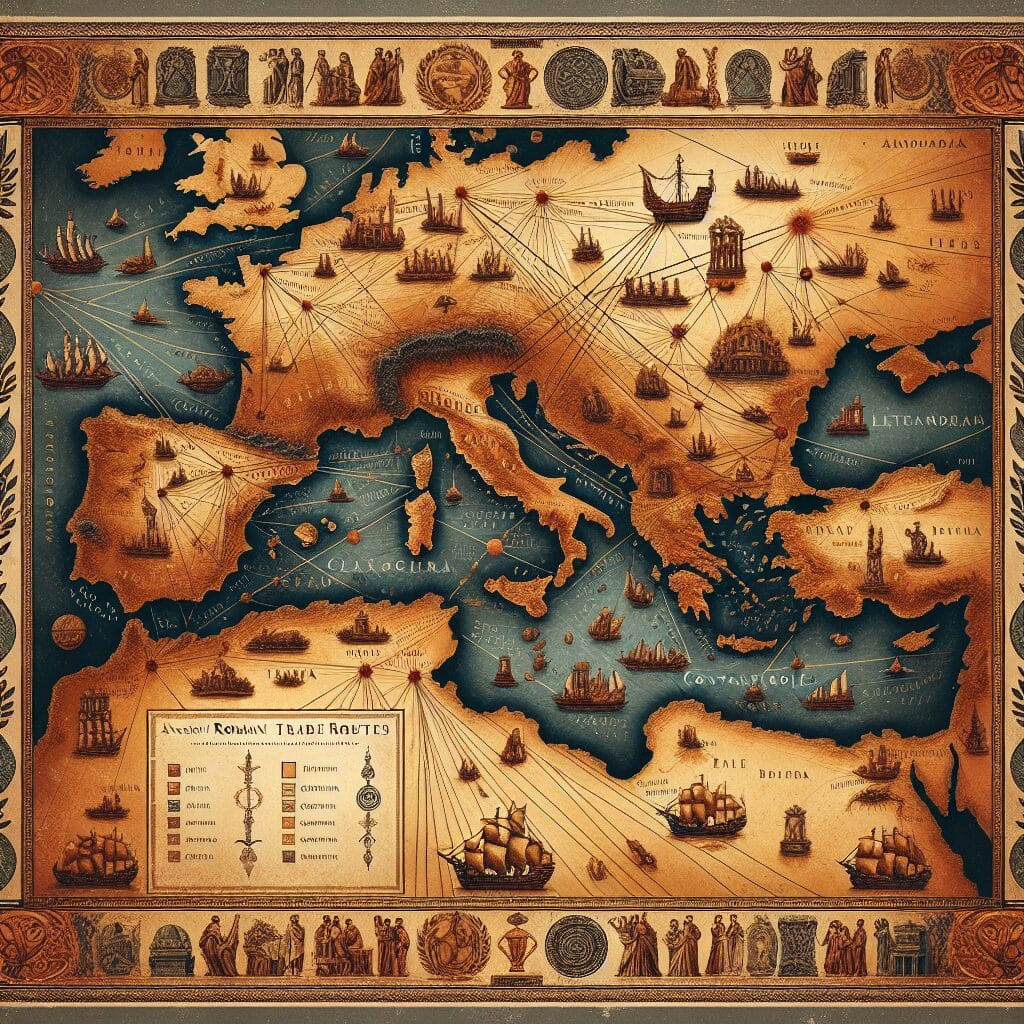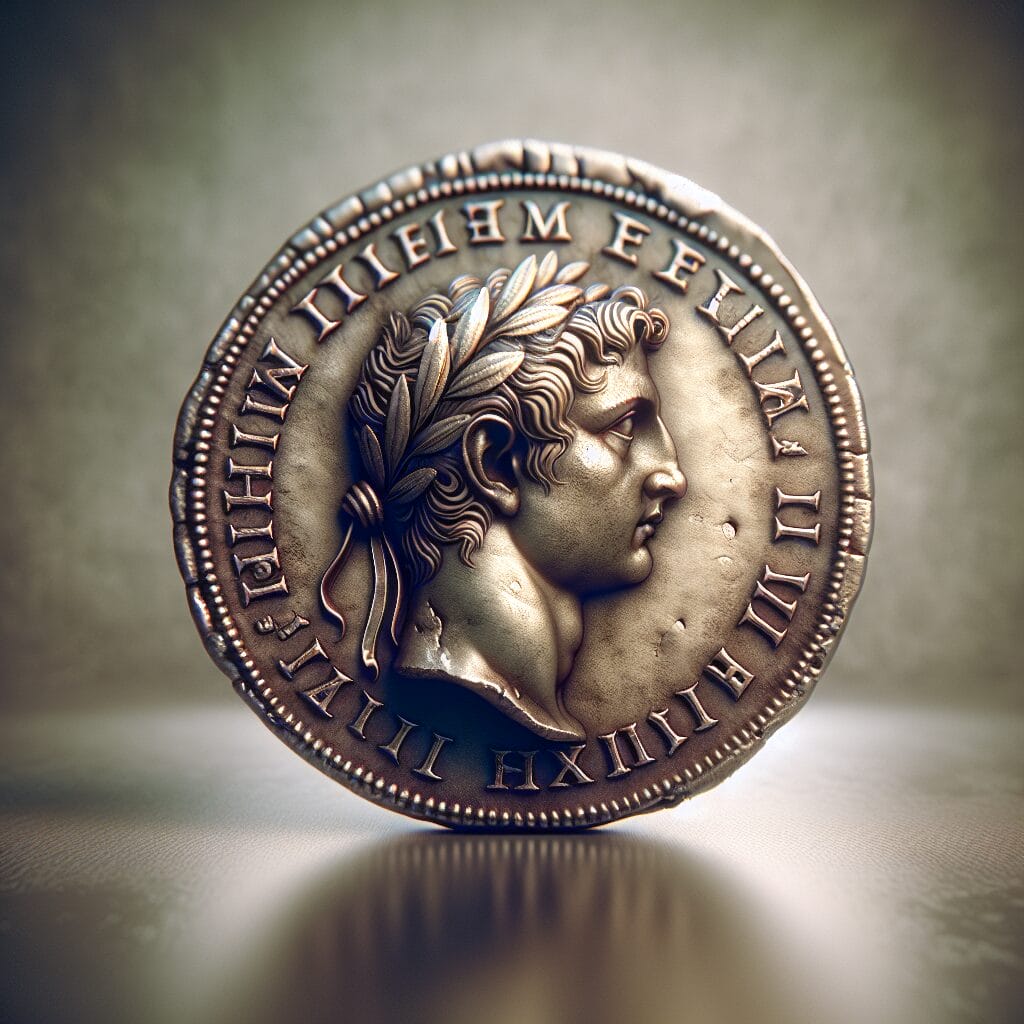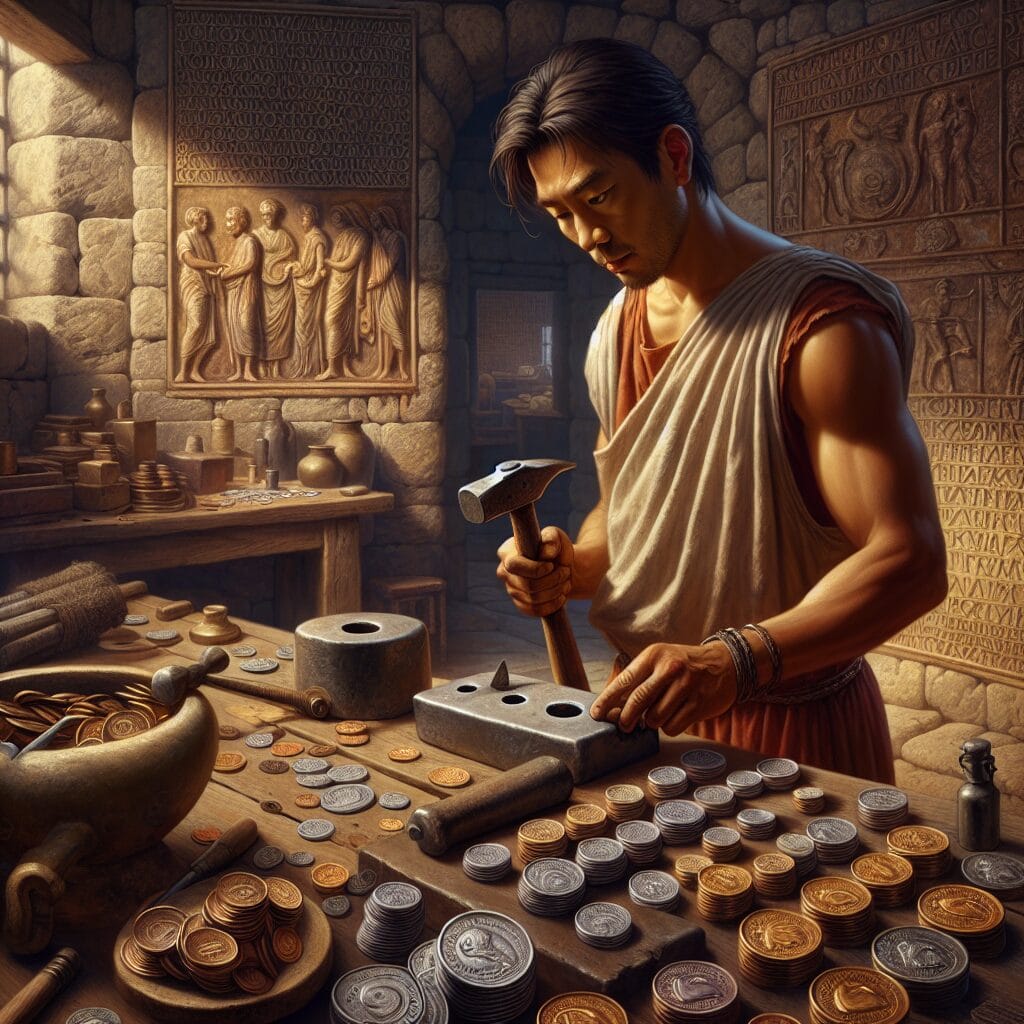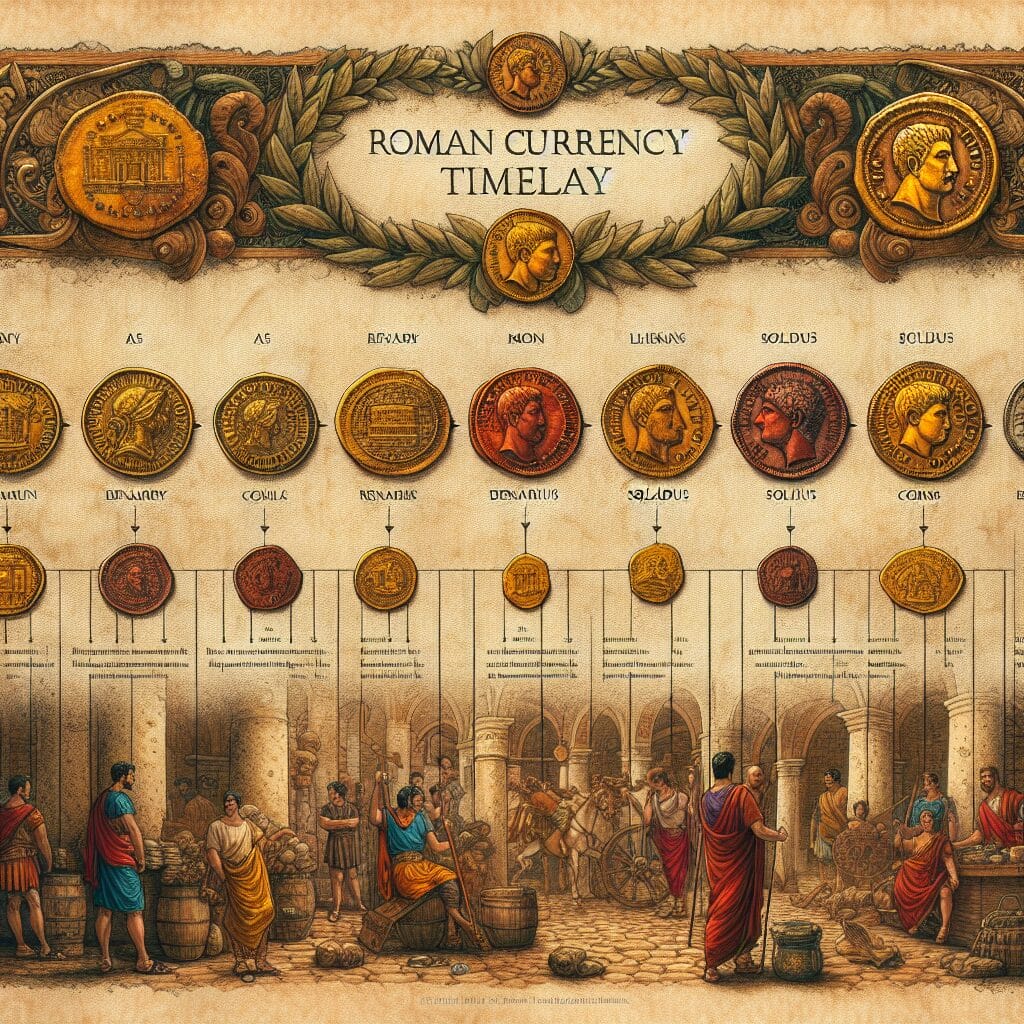In Ancient Rome, coinage played a pivotal role in shaping daily life and economic activities. Roman coins were not merely monetary instruments; they were embodiments of cultural, political, and technological advancements. The transition from a system of bronze weights to minted coins marked a significant evolution, facilitating commerce and standardized payments across the expanding empire.
Among the various coin types, the silver denarius emerged as a principal currency, while other denominations like the sestertius and aureus catered to different economic needs. This diverse coinage system not only reflected Rome’s economic prowess but also served as a medium for cultural propaganda, often depicting emperors and significant events. As we delve deeper, we will explore how these coins shaped the societal and economic fabric of Ancient Rome.
The Roman Currency System
The Roman currency system was a complex network of denominations that adapted to the economic needs of the empire. These coins, produced through a meticulous minting process, were crafted in workshops known as mints, which played a crucial role in both the economy and cultural dissemination.

Denarius
Introduced around 211 BCE, the denarius became the cornerstone of Roman silver currency. It equaled ten bronze asses and was the most widely circulated coin for centuries.
Sestertius
The sestertius was introduced by Augustus as a brass coin in 23 BCE. It served as a significant denomination for everyday transactions and social representation.
Aureus
Gold coins, known as aurei, became prominent during the Republic, particularly under Julius Caesar, reflecting wealth and power.
Table of Coin Values
| Coin | Value |
|---|---|
| Denarius | 10 Asses |
| Sestertius | 1/4 Denarius |
| Aureus | 25 Denarii |
The creation and circulation of these coins not only facilitated trade but also conveyed cultural and political messages. The intricate minting techniques employed ensured their quality, making them integral to the Roman economic system and a lasting legacy of Roman innovation.
Coins in Daily Transactions
In Ancient Rome, coins were indispensable in facilitating everyday transactions, reflecting the economic and social fabric of Roman society. Citizens, regardless of their social status, relied on coinage to purchase goods and services. Daily shopping involved buying food from small shops and street vendors, where coins were exchanged for staples like bread and fresh produce. The lack of refrigeration necessitated frequent trips to the market, making coins a crucial tool for acquiring necessities.

In public spaces such as the nundinae, or public markets, coins were central to trade and commerce. These markets, regulated by the state, ensured that transactions adhered to standards, with coins providing a standardized medium of exchange. This reliability was enhanced by the stamped markers on coins, indicating their origin and purity, which helped build trust among traders and consumers.
The use of coins not only facilitated smoother transactions but also enabled a structured economy, bridging the gap between different social classes. While the wealthy indulged in luxury items, the poorer citizens managed their household needs with basic staples, demonstrating the integral role of coinage in the economic dynamics of the Roman Empire.

Coins and Social Status
In Ancient Rome, the possession of coins was a clear indicator of one’s social hierarchy and had a profound impact on social mobility. The ability to engage in economic transactions was largely determined by one’s financial status, with the wealthy having access to a greater variety of goods, including imported luxuries and spices. This disparity was evident in public markets where affluent citizens were seen exchanging coins for items that symbolized their elevated status.
For the poorer classes, coins were less accessible, and their economic activities were often limited to acquiring essential staples, such as cereals and bread. These citizens sometimes relied on government-provided grain allotments, which further highlighted the economic divide. The limited access to coinage among lower classes underscored the rigid social structure of Roman society, where wealth dictated one’s lifestyle and opportunities.
“Wealth is the ability to fully experience life,” a sentiment echoed in Roman society where coins were not merely a medium of exchange but a symbol of privilege and power. The possession and circulation of coins thus reinforced the existing social hierarchy, influencing the economic and social landscape of the Roman Empire.
Cultural Significance of Coins
In Ancient Rome, coins were not merely a medium of exchange but also potent tools for propaganda and cultural identity. The Romans adeptly utilized coins to convey messages that reinforced their societal values and political narratives. This was achieved through the strategic use of imagery and inscriptions, which served to align public perception with imperial ideologies.

The symbolism on Roman coins evolved significantly over time. Early coins featured simple depictions like cattle, but later incorporated deities such as Jupiter and Mars, underscoring the state’s divine favor and military prowess. These images were carefully selected to resonate with Roman identity, particularly in newly conquered territories, thus reinforcing authority and cultural heritage.
Coins also played a critical role in promoting imperial power. As the Republic waned, the likenesses of living politicians began appearing on coins, starting with Julius Caesar. This practice allowed emperors to broadcast their legitimacy and achievements, with coins often celebrating military victories or ancestral lineage. The inscriptions on these coins frequently included political slogans, further solidifying the ruler’s image and aspirations in the public consciousness.
Economic Impact of Coinage
The introduction of coinage in Ancient Rome marked a transformative shift from a barter-based economy to a standardized monetary system. This transition significantly bolstered the Roman economy by facilitating more efficient and reliable trade practices. The use of coins like the denarius provided a consistent medium of exchange, essential for both local and international commerce.

Coins became indispensable for state finances and taxation, as highlighted by Kenneth W. Harl’s research. The standardized currency enabled the Roman Empire to manage its vast territories effectively, supporting military campaigns and public projects. This monetary system also played a crucial role in the empire’s expansion, as it simplified transactions across regions.
Furthermore, Roman coinage facilitated trade by providing a reliable currency that merchants and consumers could trust. The regularization of coinage allowed for consistent coin issues, thus promoting economic stability and growth. As a result, coins were not only a tool for daily transactions but also a cornerstone of the Roman economic infrastructure.
Political Influence of Roman Coins
Roman coins were instrumental in conveying political messages, serving as a medium for propaganda across the empire. Initially, coins featured simple imagery, such as cattle or branches, but evolved to showcase deities like Jupiter and Mars, reinforcing Roman identity in conquered territories. Over time, living political figures began to appear on coins. Notably, Gaius Julius Caesar became the first living individual depicted, symbolizing his authority and status.

The strategic use of inscriptions further enhanced their political utility. Coins minted by figures like Marcus Junius Brutus included political slogans or references to ancestors, aiming to bolster political lineage and popularity. Commemorative coins celebrated military victories, enhancing the ruler’s image and legitimacy.
Beyond messaging, coins played a crucial role in governmental regulation and control over the economy. The Roman state exercised control over coin production, as discussed in historical analyses. This allowed the government to manage economic resources, particularly during military campaigns, and exert influence over commerce.
Ultimately, Roman coins shaped public opinion by promoting imperial authority and achievements, ensuring public loyalty, and maintaining governmental control.
Technological Advances in Minting
The production of Roman coins involved significant technological advancements that ensured their quality and consistency, which were pivotal for maintaining economic stability. The minting process evolved from the early use of simple bronze weights to more sophisticated techniques involving engraved dies and mechanical striking. This innovation facilitated the mass production of coins, allowing for consistent design and standardization across the vast Roman Empire.

A notable advancement was the use of screw presses in the minting process, which improved the precision and detail of coin engravings. This ensured that the imagery and inscriptions on coins were clear and uniform, reinforcing their role as tools for both economic transactions and political communication. Historical records indicate that Roman mints operated under strict regulations to maintain the integrity of coinage, with magistrates overseeing production to prevent counterfeiting and debasement.
One historical anecdote highlights how Emperor Augustus standardized the weight and metal content of coins, setting a precedent for future minting practices. These efforts not only enhanced the reliability of Roman currency but also supported the economic and political objectives of the state. As a result, Roman coins became symbols of authority and trust throughout the empire.

Evolution of the Roman Currency System
The evolution of Roman coinage reflects the dynamic history of the empire, marked by significant changes and reforms. The introduction of minted coins in the late 4th century BCE replaced the earlier system of bronze weights, facilitating trade and commerce across the Roman territories. Early coinage primarily featured simple imagery such as cattle and branches, gradually evolving to depict Roman deities and symbols that reinforced Roman identity.

As the empire expanded, economic demands necessitated reforms. The transition from Republic to Empire saw coins featuring living political figures, with Gaius Julius Caesar being the first to have his likeness minted, symbolizing his power. Such depictions served both as political messages and propaganda tools, influencing public perception.
Economic challenges, such as the high costs of military campaigns, prompted emperors like Diocletian to implement reforms, including standardizing designs and guaranteeing metal content. These measures aimed to stabilize the economy and restore public confidence in currency. Despite these efforts, counterfeit coins posed a persistent challenge, highlighting the need for ongoing regulation and reform throughout Roman history.
Coins in Art and Literature
In ancient Rome, coins frequently appeared in both art and literature, reflecting their central role in daily life and societal values. Roman art often depicted coins as symbols of wealth and power. For instance, frescoes from Pompeii illustrate merchants and traders engaged in transactions, highlighting coins as integral to commerce and exchange. Moreover, mosaics and sculptures occasionally featured coins, emphasizing their importance in the economic and cultural fabric of Rome.

Literature from the period further underscores the significance of coins. Roman authors such as Horace and Juvenal made numerous references to coins in their works, using them to critique societal norms and highlight economic disparities. In his satires, Juvenal often alluded to the corrupting influence of wealth, symbolized through coins, thereby providing a socio-political commentary on the values and morals of Roman society. These literary mentions not only reflect the ubiquity of coins but also their role as a metaphor for broader social issues. For more on the political implications of coinage, see this article.
Thus, the representation of coins in art and literature offers valuable insights into their multifaceted role in Roman society, serving as both practical tools and potent symbols of power and influence.
Religious and Ritualistic Uses of Coins
In ancient Rome, coins held significant roles in religious ceremonies, serving as offerings to deities and playing a part in various rituals. Romans often dedicated coins to temples as a gesture of devotion or in hopes of divine favor. This practice exemplified the intertwining of economic and spiritual life, where monetary wealth was seen as a conduit to spiritual blessings.

Coins were not only offerings but also carried symbolic meanings in religious practices. Often, the imagery and inscriptions on coins bore religious significance, depicting deities such as Jupiter or Mars, which reinforced their sacred status. These images served to remind citizens of the divine protection over Rome, further embedding religious reverence within everyday transactions.
Archaeological sites, such as those around ancient temples, have unearthed numerous coins, indicating their use in religious contexts. For instance, coin hoards discovered in sanctuaries suggest they were part of ritual deposits, possibly to ensure the continued favor of the gods. Thus, Roman coins not only facilitated economic transactions but also fulfilled important religious functions, symbolizing the connection between the material and the sacred.
Coins and Family Wealth
In ancient Rome, coins were not only instruments of trade but also pivotal in shaping family economics. Families used coins as a form of savings, providing a tangible asset that could be preserved over time. This practice allowed families to accumulate wealth, which was crucial for their economic stability and social standing.

The ability to amass coins offered a means of safeguarding family fortunes, especially in uncertain times. Coins represented a standardized value, making them a reliable form of wealth storage. Unlike land or other assets, coins could easily be transferred or hidden, offering flexibility in managing family resources.
Inheritance played a significant role in the transfer of wealth between generations. Roman law facilitated the passing of coin wealth through wills, ensuring that family fortunes were maintained and expanded. Historical records indicate that prominent Roman families often used coins to secure their legacy, allowing them to invest in properties or support political ambitions.
Thus, coins were integral to the economic strategies of Roman families, serving as both a means of saving and a vehicle for wealth transfer, ensuring the continuation of familial prosperity across generations.

Conclusion
The role of coins in ancient Rome was multifaceted, influencing daily transactions, social structures, and political landscapes. They served as a medium for commerce and a reflection of social status, while also acting as powerful tools for political propaganda and economic regulation. Roman coins depicted deities, political figures, and propaganda, reinforcing the authority and values of the time.
The legacy of Roman coinage endures in its demonstration of how currency can shape and reflect societal structures. From enabling trade to conveying political messages, Roman coins laid the groundwork for modern currency systems. Their historical significance lies in their ability to both reflect and influence the culture, politics, and economy of one of history’s most formidable empires.

Frequently Asked Questions
What were the main types of coins used in Ancient Rome?
Roman currency primarily consisted of the denarius, sestertius, and aureus. These coins varied in value and material, with the denarius being a common silver coin used for everyday transactions. For more details, refer to this overview of Roman coinage.
How did Romans verify the authenticity of their coins?
To combat counterfeit coins, the Roman government employed professionals to test coin authenticity. Despite these efforts, the volume of fake coins often overwhelmed the system, as noted in historical assessments of economic challenges faced by the empire.
Were coins used exclusively for monetary transactions?
No, Roman coins also served as a medium for political communication and propaganda. Emperors used coins to promote their authority and achievements through imagery and inscriptions, as detailed in this analysis of coins as propaganda.
Did all Roman citizens have equal access to coins?
Access to coinage varied significantly between social classes. Wealthier citizens had easier access to coins, which reflected their social status, while lower classes relied more on barter or smaller denominations.

